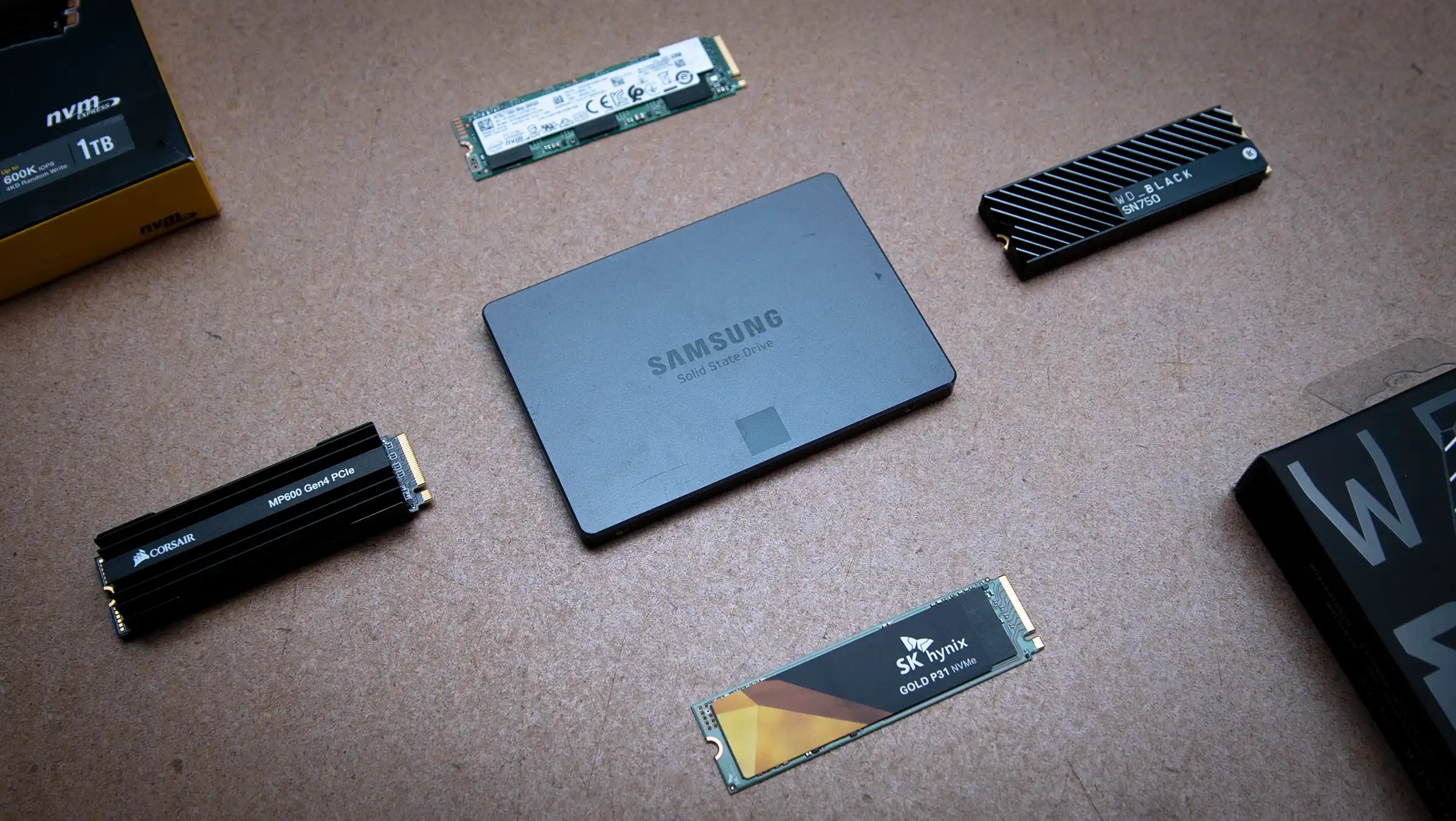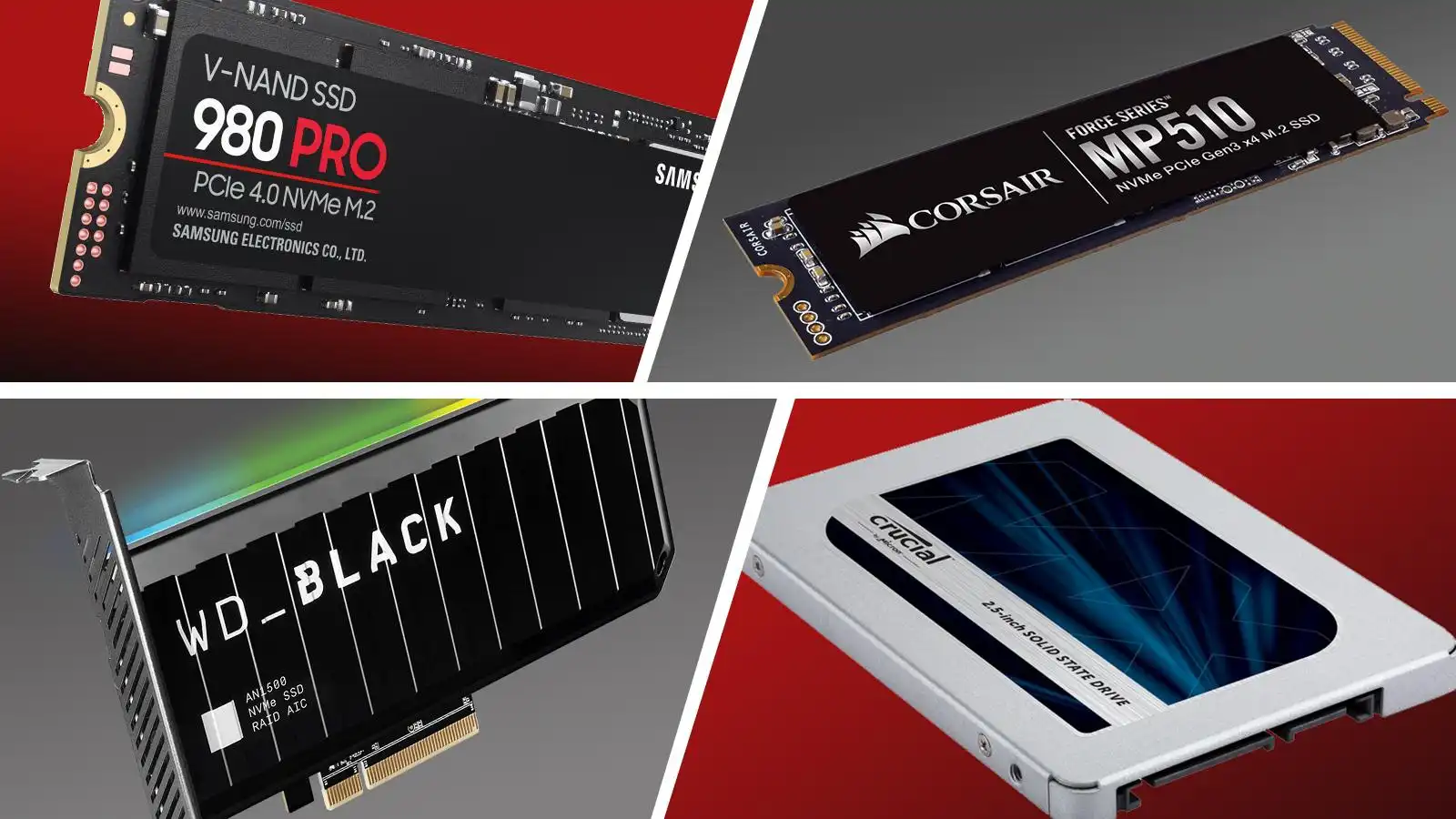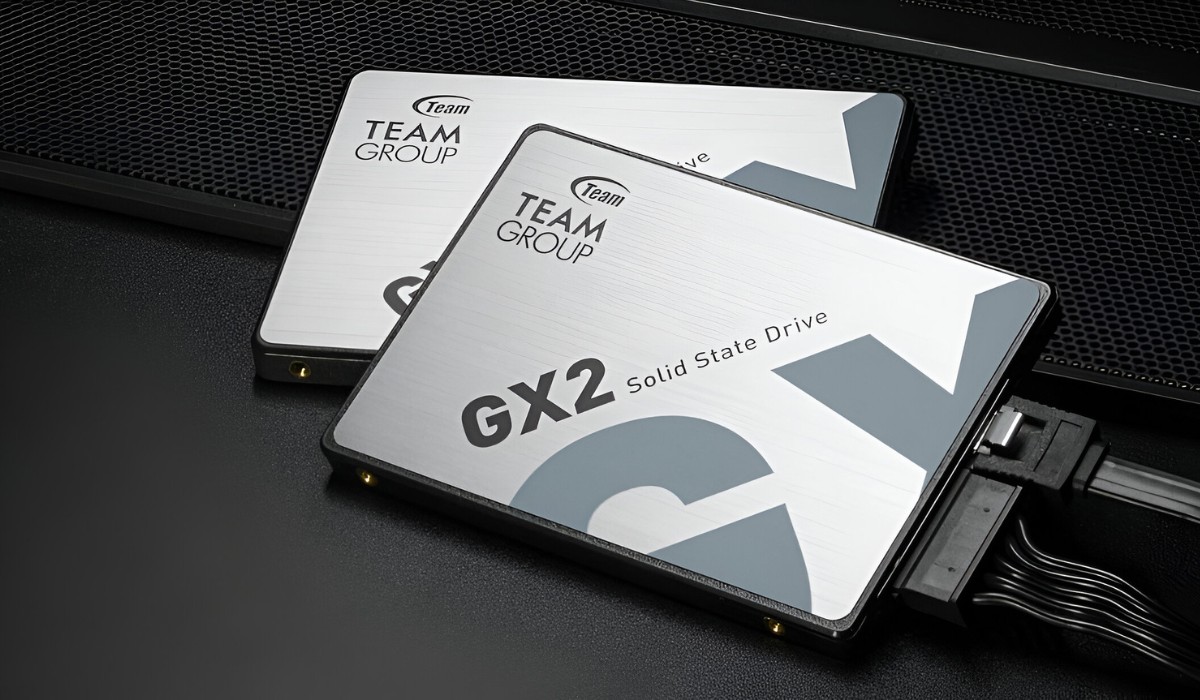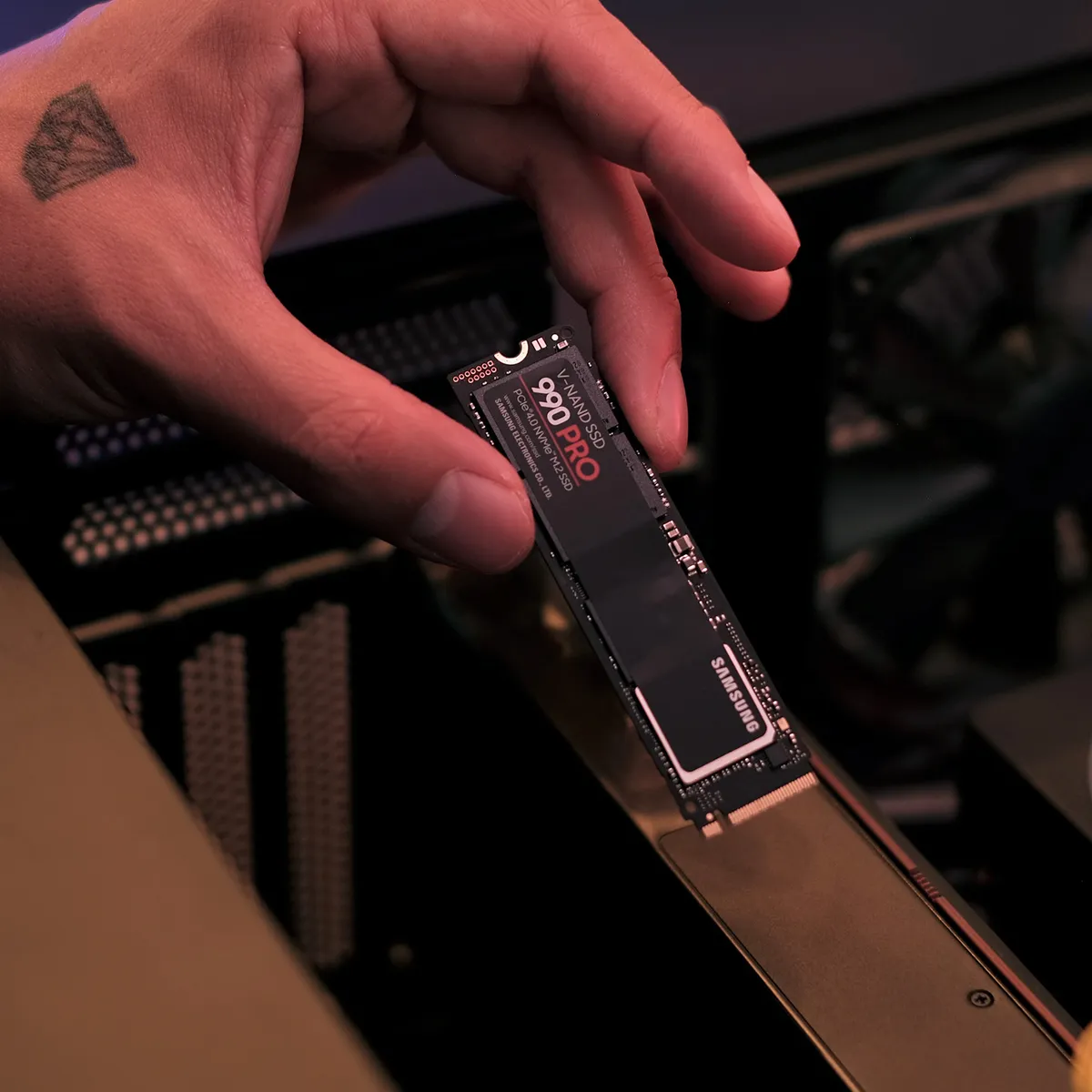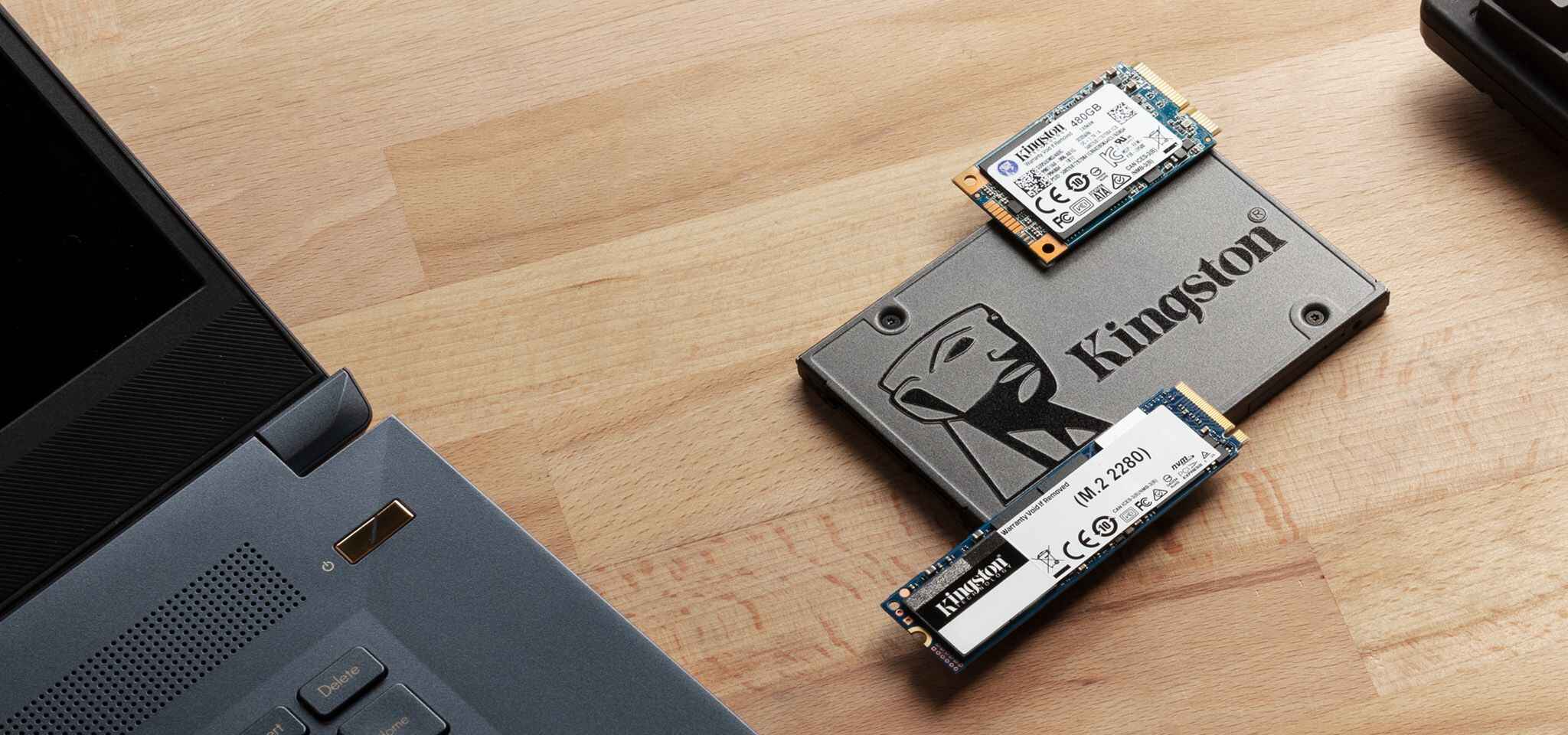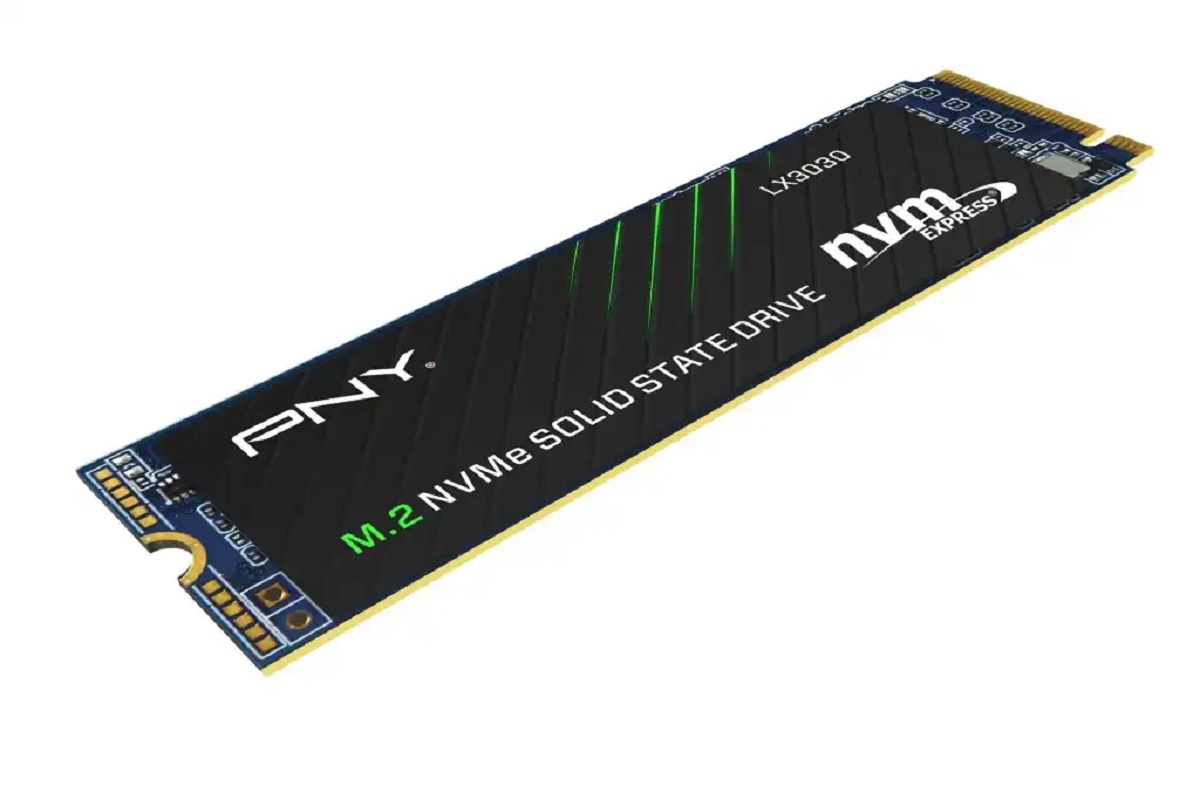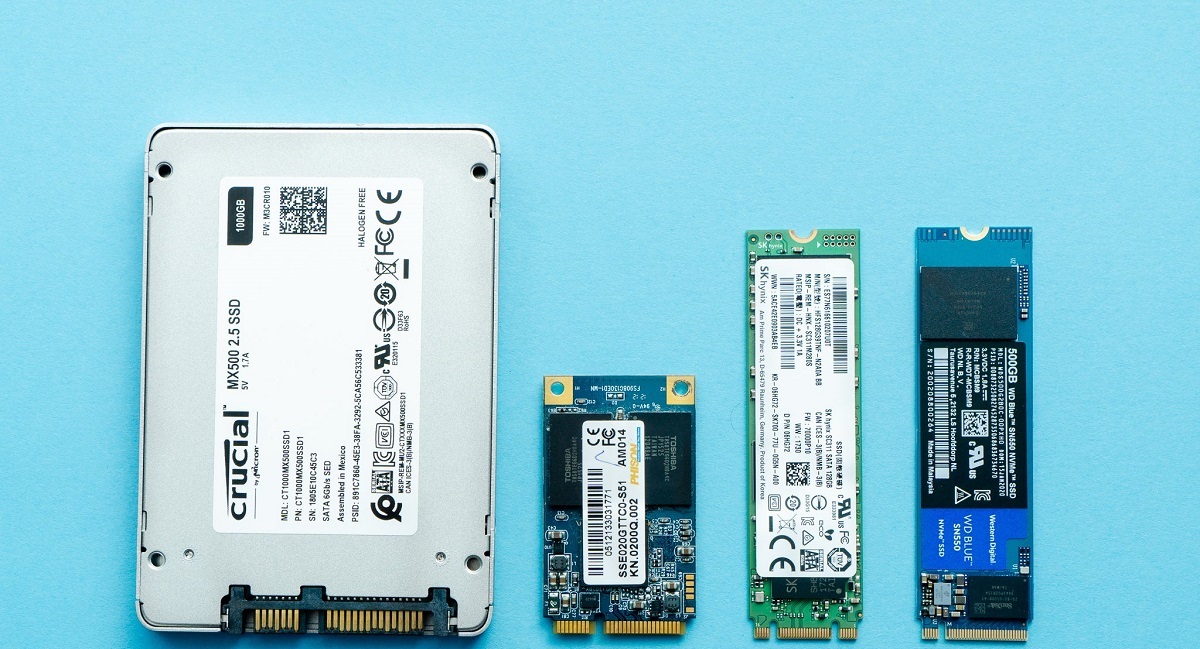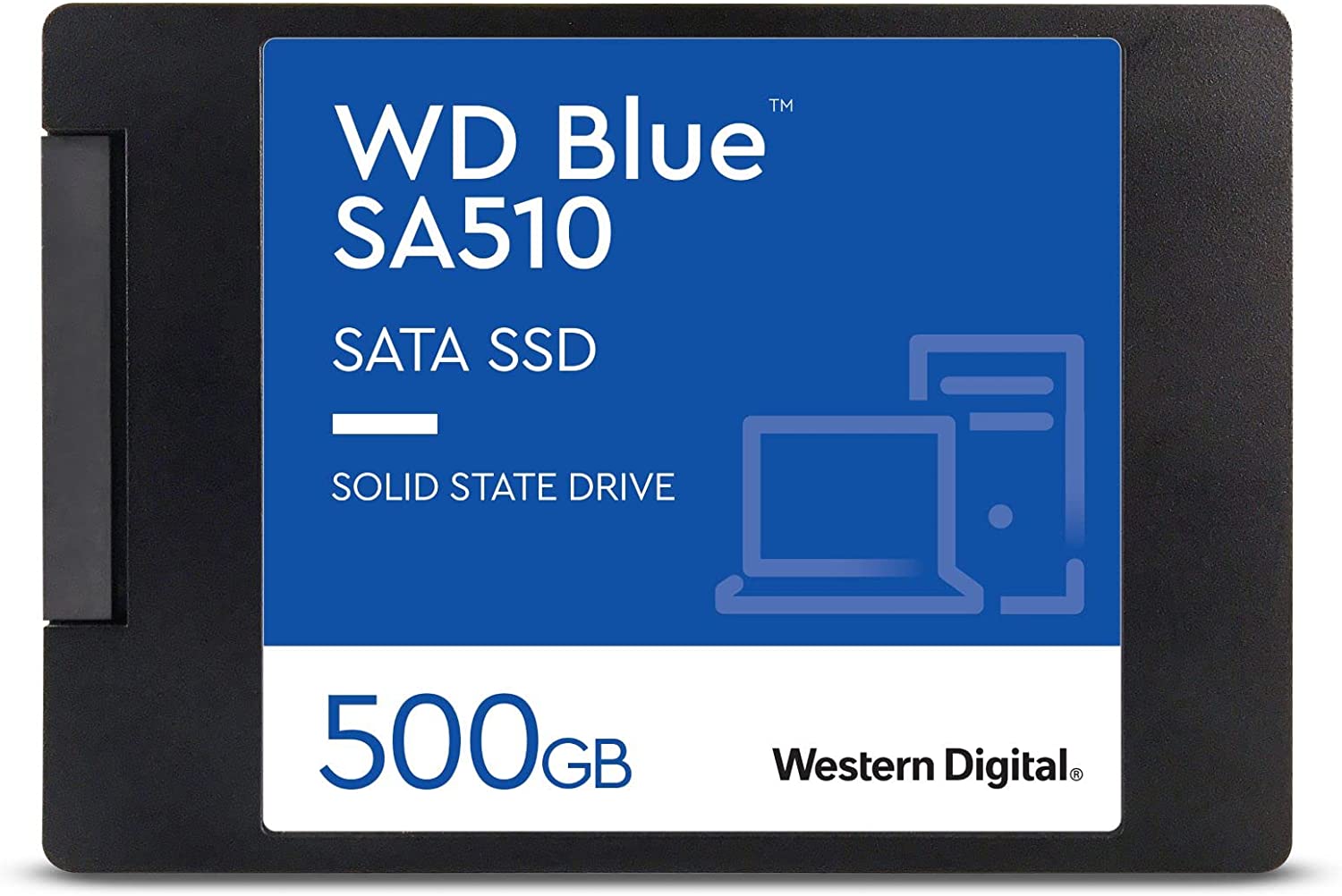Introduction
Welcome to our comprehensive guide on SATA SSD speed. In this article, we will explore the world of SATA SSDs and dive deep into their performance capabilities. Whether you’re a tech enthusiast, a casual computer user, or a professional in need of fast storage solutions, understanding the speed of SATA SSDs is crucial.
So, what exactly is SATA SSD? SATA stands for Serial Advanced Technology Attachment, and SSD stands for Solid State Drive. It is a type of storage device that uses flash memory to store and retrieve data. Unlike traditional hard disk drives (HDDs) that rely on spinning disks and mechanical components, SATA SSDs offer a more efficient and reliable storage solution.
In recent years, SATA SSDs have gained immense popularity due to their faster data transfer speeds, increased durability, and compact form factor. They have become an essential component of modern computing systems, powering everything from laptops to gaming consoles to enterprise servers.
But how does SATA SSD achieve its impressive speeds? The answer lies in its architecture and technology. Instead of using spinning platters and read/write heads like HDDs, SATA SSDs utilize NAND flash memory chips to store data and retrieve it at a much faster rate.
With SATA SSDs, you can experience significantly improved performance in terms of data read and write speeds. Sequential read and write speeds refer to the speed at which data is transferred in a continuous, linear manner. Random read and write speeds, on the other hand, measure the speed at which data is accessed and transferred in a non-sequential, fragmented manner.
Various factors influence the speed of SATA SSDs, including the NAND flash memory type, the controller, and the interface. In this guide, we will delve into the specifics of SATA SSD speed and explore how these factors can impact its performance.
By the end of this article, you will have a clear understanding of SATA SSD speed and be better equipped to make informed decisions when it comes to choosing the right storage solution for your needs. So, let’s dive in and explore the fascinating world of SATA SSD speed!
What is SATA SSD?
SATA SSD, or Serial Advanced Technology Attachment Solid State Drive, is a type of storage device that uses flash memory to store and retrieve data. It is a modern and high-performance alternative to traditional hard disk drives (HDDs).
Unlike HDDs that rely on spinning platters and read/write heads to access data, SATA SSDs use NAND flash memory chips to store data electronically. This technology eliminates the need for moving parts, resulting in faster and more reliable data transfer speeds.
SATA SSDs come in various form factors, including 2.5-inch drives that can be easily installed in laptops and desktop computers, as well as M.2 drives that are designed for ultra-thin and compact devices. These drives connect to the computer’s motherboard using the SATA interface, hence the name “SATA SSD.”
One of the key advantages of SATA SSDs is their speed. They offer significantly faster read and write speeds compared to traditional HDDs. This means that data can be accessed and transferred much more quickly, resulting in reduced loading times and improved overall system performance.
In addition to speed, SATA SSDs also offer several other benefits. They are more durable than HDDs since they do not have any moving parts that can be damaged over time. This makes them less prone to physical failure and better suited for use in portable devices.
SATA SSDs also consume less power compared to HDDs, making them more energy-efficient. This can result in longer battery life for laptops and lower electricity bills for desktop computers.
Furthermore, SATA SSDs produce less noise and operate silently since they do not have any spinning parts. This creates a quieter and more enjoyable computing experience, particularly for users who require a peaceful working environment.
Overall, SATA SSDs provide a significant upgrade in terms of speed, durability, power efficiency, and noise reduction compared to HDDs. They are the storage solution of choice for those seeking superior performance and reliability in their computing devices.
In the next section, we will explore in detail how SATA SSDs achieve their impressive speeds and the performance differences compared to traditional HDDs.
How does SATA SSD work?
SATA SSDs, or Serial Advanced Technology Attachment Solid State Drives, work based on the principles of NAND flash memory technology. This allows for faster and more efficient data storage and retrieval compared to traditional hard disk drives (HDDs).
Inside a SATA SSD, you will find NAND flash memory chips, a controller, and a SATA interface. Let’s dive into the details of how each component plays a crucial role in the functioning of SATA SSDs:
1. NAND flash memory: The primary storage component of SATA SSDs is the NAND flash memory. It is a type of non-volatile memory that can retain data even when the power is turned off. The data is stored in these memory cells as electrical charges, with each cell representing a binary value (0 or 1). The density of the NAND flash memory determines the storage capacity of the SSD.
2. Controller: The controller acts as the brain of the SATA SSD. It manages and coordinates the data transfer between the computer’s motherboard and the NAND flash memory. The controller performs tasks such as error correction, wear-leveling, and garbage collection. It also optimizes the read and write operations, ensuring efficient data flow and maximizing the lifespan of the SSD.
3. SATA interface: The SATA interface serves as the connection between the SATA SSD and the computer’s motherboard. It allows for high-speed data transfer between the SSD and the rest of the system. SATA interfaces come in different generations, with each generation offering increased bandwidth and faster data transfer speeds.
When data is written to a SATA SSD, the controller splits the incoming data into smaller chunks called “pages” and stores them in the NAND flash memory. These pages are further grouped together into “blocks” for efficient management. To update or delete data, the SSD employs a process known as “wear-leveling,” which evenly distributes the writes and erasures across the NAND flash memory. This helps to prevent premature wear of certain memory cells.
When it comes to retrieving data, the controller seeks the requested information and combines the relevant pages to deliver the complete data to the system. The data retrieval process is incredibly fast since there are no moving mechanical components involved, unlike HDDs.
Overall, the combination of NAND flash memory, a controller, and the SATA interface allows SATA SSDs to deliver superior speed, reliability, and performance compared to HDDs. The absence of moving parts makes SATA SSDs highly resistant to physical shock and less prone to failure, ensuring a longer lifespan and optimal performance.
Next, let’s explore the speed comparison between SATA SSDs and traditional HDDs to understand the performance benefits of choosing a SATA SSD.
Speed comparison between SATA SSD and traditional HDD
When it comes to speed, SATA SSDs have a clear advantage over traditional hard disk drives (HDDs). The difference in performance can be attributed to the fundamental differences in the technology used by these two storage solutions.
HDDs rely on spinning platters and read/write heads to access data. The read/write heads move across the spinning platters, searching for and retrieving the requested data. This mechanical process introduces latency and limits the speed at which data can be accessed.
In contrast, SATA SSDs utilize NAND flash memory chips to store and retrieve data electronically. This eliminates the need for any moving parts, resulting in significantly faster data transfer speeds.
Let’s examine the key aspects of speed where SATA SSDs outperform HDDs:
1. Sequential read and write speeds: SATA SSDs deliver outstanding sequential read and write speeds. This refers to the rate at which data is transferred in a continuous, linear manner. With faster sequential speeds, tasks such as booting up the system, launching applications, and transferring large files become much quicker compared to HDDs.
2. Random read and write speeds: SATA SSDs excel in random read and write speeds, which measure the speed at which data is accessed and transferred in a non-sequential, fragmented manner. This is especially beneficial during tasks that involve multiple small file accesses, such as opening multiple applications or multitasking. SATA SSDs can handle random access requests with ease, resulting in improved system responsiveness and reduced lag.
3. Overall system performance: By delivering faster read and write speeds, SATA SSDs significantly enhance the overall performance and responsiveness of the system. Applications load faster, files transfer quickly, and the system boots up in no time. The difference in speed can be especially noticeable in tasks that involve data-intensive operations, such as video editing, graphic design, and gaming.
In comparison, HDDs struggle to match the speed of SATA SSDs due to their mechanical limitations. The spinning platters and moving read/write heads introduce delays and increase access times. While HDDs can still provide sufficient storage capacity at a lower price point, they fall short in terms of performance when compared to SATA SSDs.
It’s important to note that the speed difference between SATA SSDs and HDDs can vary depending on the specific models and configurations. However, as a general rule, SATA SSDs are considered to be several times faster than HDDs, resulting in a noticeable improvement in overall system speed and performance.
Next, let’s explore the sequential read and write speeds of SATA SSDs in more detail to understand their capabilities.
Sequential read and write speeds of SATA SSD
Sequential read and write speeds are crucial performance metrics when it comes to measuring the speed of SATA SSDs. These metrics indicate how quickly data can be transferred in a continuous, linear manner, which is especially important for tasks involving large file transfers, software installations, and system boot-ups.
SATA SSDs excel in delivering impressive sequential read and write speeds compared to traditional hard disk drives (HDDs). The absence of mechanical components allows for faster data access and transfer, resulting in significantly improved performance.
The sequential read speed of a SATA SSD refers to how quickly it can retrieve data in a continuous manner. This speed is usually measured in megabytes per second (MB/s) or gigabytes per second (GB/s). Higher sequential read speeds mean that data can be accessed and loaded faster, resulting in reduced loading times for applications and files.
SATA SSDs typically offer sequential read speeds that range from 500 MB/s to over 3,500 MB/s, depending on the specific model and generation. Higher-end SSDs with advanced NAND flash memory technology and optimized controllers can achieve faster sequential read speeds, providing an exceptional user experience and noticeably improving system performance.
The sequential write speed of a SATA SSD refers to how quickly it can write data in a continuous manner. Like the sequential read speed, this speed is also measured in MB/s or GB/s. Faster sequential write speeds mean that large files can be transferred and saved more quickly, making tasks such as video editing, content creation, and data backups more efficient.
SATA SSDs typically offer sequential write speeds that range from 400 MB/s to over 3,000 MB/s, depending on the specific model and generation. Just like sequential read speeds, higher-end SSDs tend to have faster sequential write speeds, allowing for faster file transfers and storage operations.
It’s important to note that the sequential read and write speeds of SATA SSDs can vary depending on various factors including the SSD’s architecture, NAND flash memory type, and the controller. SSDs with multi-level cell (MLC) or triple-level cell (TLC) NAND flash memory tend to have slightly lower sequential speeds compared to those with the more expensive and faster-performing SLC (single-level cell) NAND flash memory.
Furthermore, it’s essential to consider that the sequential read and write speeds mentioned by manufacturers are often the maximum theoretical speeds that the SSD can achieve under optimal conditions. Real-world performance may vary depending on the specific usage scenarios and system configurations.
Despite these variations, SATA SSDs consistently outperform HDDs when it comes to sequential read and write speeds. The faster transfer rates make SATA SSDs an excellent choice for those seeking improved system responsiveness, faster file transfers, and reduced waiting times for data-intensive tasks.
Next, let’s delve into the random read and write speeds of SATA SSDs, which further contribute to their outstanding performance.
Random read and write speeds of SATA SSD
While sequential read and write speeds are essential metrics for measuring the speed of SATA SSDs, random read and write speeds are equally important. These metrics determine how quickly the SSD can handle fragmented and non-sequential data access, which is critical for tasks involving multiple small file operations, multitasking, and system responsiveness.
SATA SSDs excel in delivering impressive random read and write speeds compared to traditional hard disk drives (HDDs). The absence of mechanical parts allows for near-instantaneous access to data, resulting in significantly improved performance.
Random read speed refers to how quickly an SSD can access and retrieve small-sized data from random storage locations. It is especially crucial for tasks that involve frequent access to various files and applications, such as loading games, launching programs, and accessing databases.
SATA SSDs typically offer random read speeds that range from tens of thousands to hundreds of thousands of input/output operations per second (IOPS). Higher-end SSDs with advanced controllers, optimized firmware, and high-quality NAND flash memory can achieve even higher random read speeds, providing a highly responsive computing experience.
Random write speed, on the other hand, refers to how quickly an SSD can write small-sized data to random memory locations. This speed is particularly important for tasks involving file transfers, software installations, and operating system updates.
SATA SSDs offer random write speeds ranging from tens of thousands to hundreds of thousands of IOPS, depending on the specific model and generation. Advanced SSDs with high-performance controllers and efficient write algorithms can attain faster random write speeds, ensuring smooth and efficient data storage operations.
The impressive random read and write speeds of SATA SSDs enable faster multitasking, responsive application launches, and seamless data access even when dealing with numerous small files. This makes SATA SSDs highly suitable for tasks that require frequent and random data operations, such as content creation, video editing, and data analysis.
It’s important to note that the random read and write speeds of SATA SSDs can vary based on various factors, including the SSD’s architecture, controller efficiency, and NAND flash memory type. SSDs with multi-level cell (MLC) or triple-level cell (TLC) NAND flash memory generally have slightly lower random speeds compared to those with the faster performing single-level cell (SLC) NAND flash memory.
Additionally, it’s important to consider that the random read and write speeds mentioned by manufacturers represent the maximum theoretical speeds achievable under ideal conditions. Real-world performance may vary depending on specific usage scenarios, workload characteristics, and system configurations.
Despite these variations, SATA SSDs consistently outperform HDDs when it comes to random read and write speeds. The ability to handle random data access quickly and efficiently makes SATA SSDs an excellent choice for users seeking improved multitasking capabilities, faster application launches, and improved overall system responsiveness.
Next, let’s explore the factors that can influence the speed of SATA SSDs.
Factors influencing the speed of SATA SSD
Several factors can influence the speed and performance of SATA SSDs. Understanding these factors can help you make an informed decision when choosing the right SATA SSD for your needs. Let’s explore the key aspects that influence the speed of SATA SSDs:
1. NAND flash memory type: The type of NAND flash memory used in an SSD can significantly impact its speed. Different types include single-level cell (SLC), multi-level cell (MLC), and triple-level cell (TLC) flash memory. SLC NAND provides the highest level of performance but comes at a higher cost, while MLC and TLC NAND offer more affordable options but with slightly lower speeds.
2. Controller: The controller is one of the most critical components in determining the speed of an SSD. It manages the data transfer between the NAND flash memory and the system. High-quality controllers with advanced algorithms and efficient firmware can optimize data flow, improve performance, and enhance the overall speed of the SATA SSD.
3. SATA interface: The SATA interface itself can impact the speed of the SSD. SATA interfaces come in different generations, such as SATA III (6 Gbps), SATA II (3 Gbps), and SATA I (1.5 Gbps). Choosing an SSD that supports the latest SATA III interface ensures maximum transfer speeds and compatibility with modern systems.
4. Capacity: The size or capacity of an SSD can also influence its speed. In general, larger-capacity SSDs tend to deliver faster performance compared to their lower-capacity counterparts. This is because SSDs with higher capacities often have more NAND flash memory chips, which can be accessed in parallel, resulting in improved read and write speeds.
5. Cache: Some SATA SSDs feature a built-in cache, which is a small amount of high-speed volatile memory. The cache helps improve the speed of read and write operations by temporarily storing frequently accessed data. SSDs with larger cache sizes can provide a performance boost for tasks involving small file operations.
6. System configuration: The overall configuration of your computer system, including the processor, RAM, and motherboard, can impact the speed of the SATA SSD. Ensuring that your system has a compatible and robust configuration will help maximize the performance and speed of the SATA SSD.
It’s important to note that while these factors influence the speed of SATA SSDs, the performance improvements may not always be noticeable in day-to-day tasks. The real-world speed benefits depend on the specific usage scenarios and workload characteristics.
By considering these factors, you can choose a SATA SSD that suits your requirements and provides the desired level of speed and performance for your computing needs.
Now that we have explored the factors influencing the speed of SATA SSDs, let’s wrap up this guide.
Conclusion
SATA SSDs, or Serial Advanced Technology Attachment Solid State Drives, offer significant speed advantages over traditional hard disk drives (HDDs). The use of NAND flash memory, absence of moving parts, and advanced controllers contribute to the superior performance and enhanced user experience provided by SATA SSDs.
We have explored various aspects of the speed of SATA SSDs, including sequential read and write speeds, random read and write speeds, as well as the factors influencing their performance.
In terms of sequential read and write speeds, SATA SSDs offer fast data transfer rates, resulting in reduced loading times and improved overall system performance. The random read and write speeds of SATA SSDs enable quick access to small-sized data, enhancing multitasking capabilities and system responsiveness.
Factors such as the type of NAND flash memory, the quality of the controller, the SATA interface, capacity, cache, and system configuration play a significant role in determining the speed of SATA SSDs. Considering these factors can help you choose the right SSD that meets your specific needs and provides the desired level of performance.
Ultimately, SATA SSDs are the preferred storage solution for those seeking faster, more reliable, and energy-efficient data storage. Whether you’re a casual computer user, a professional content creator, or a gamer, SATA SSDs can greatly enhance your computing experience.
As technology continues to advance, SATA SSDs are expected to become even faster and more affordable, further solidifying their position as the go-to storage solution for modern computing devices.
We hope this comprehensive guide has provided you with valuable insights into the speed of SATA SSDs and helped you understand the factors that influence their performance. Armed with this knowledge, you can make informed decisions when it comes to choosing a SATA SSD that perfectly matches your requirements.
Thank you for reading, and may your SATA SSD bring you blazing-fast speed and seamless performance!







